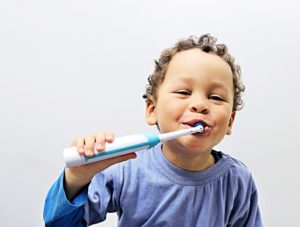 If you’ve ever done a DIY painting project at home, you know how essential it is to have the right brushes and tools. It not only makes your job easier, but the final outcome is a lot better as well. Similarly, the toothbrush your child uses has a big impact on their smile. But if you feel like you’re faced with countless choices at the store, you may be asking, “Which kid’s toothbrush is the best?” In this blog, you’ll get the answer to that question and find out what to look for to keep your child’s smile cavity-free.
If you’ve ever done a DIY painting project at home, you know how essential it is to have the right brushes and tools. It not only makes your job easier, but the final outcome is a lot better as well. Similarly, the toothbrush your child uses has a big impact on their smile. But if you feel like you’re faced with countless choices at the store, you may be asking, “Which kid’s toothbrush is the best?” In this blog, you’ll get the answer to that question and find out what to look for to keep your child’s smile cavity-free.
General Guidelines For Choosing a Kid’s Toothbrush
- Make sure it’s age-appropriate – The best toothbrush for a 14-month old will be much different than that for a 5-year old. Start by looking at the age range on the package to make sure it’s a good fit.
- Look for the ADA Seal of Approval – Any toothbrush with the ADA seal has undergone rigorous testing to make sure it’s not only safe but also effective.
- Manual or electric? – Electric toothbrushes do a great job but should only be used by kids over age 3. Also, while they can be a great choice for some kids, they aren’t right for others. If you think your child could benefit from an electric toothbrush, you may want to try one that offers a return policy, just in case.
- Ask a pediatric dentist – It’s always a good idea to ask a pediatric dentist for oral hygiene tips that are tailored to your child’s needs. In addition to helping you pick the best toothbrush, they’ll also give you great advice for every aspect of your child’s oral hygiene.
Specific Things To Look For In a Kid’s Toothbrush
In addition to the general guidelines above, here are some specifics to keep in mind when choosing a child toothbrush:
- Bristles – Most toothbrushes for kids will have soft bristles, but it doesn’t hurt to double check. Hard bristles often do more harm than good. And, contrary to popular belief, they don’t do a better job.
- Size – A small toothbrush head is easier to maneuver and better able to reach small corners of the mouth.
- Handle – Generally speaking, kids have an easier time gripping larger handles as opposed to small or thin handles. Also, make sure the handle is non-slip (e.g. either textured, made of rubber, or both).
Choosing the right toothbrush for your child is crucial for helping them maintain good oral hygiene. And, ultimately, that means they’ll have fewer cavities and a healthier, happier smile.
About the Author
Dr. Mira Albert is a board-certified pediatric dentist and Diplomate of the American Board of Pediatric Dentistry. She knows how important the right oral hygiene products are and is always happy to talk with parents about the best choices. If you’re looking for a child toothbrush or have any questions, she can be reached via her website.
